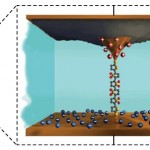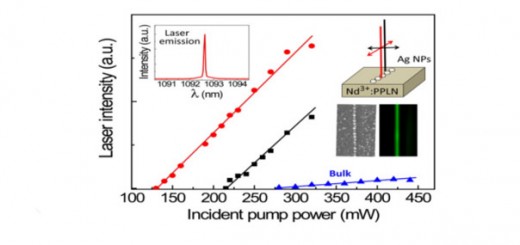The Environment Does the Trick
 In a Nature Nanotechnology News & Views entitled “The environment does the trick” Juan Carlos Cuevas discusses the recent discovery that single-molecule junctions can behave as diodes with high rectification ratios by exposing different electrode surface areas to an ionic liquid.
In a Nature Nanotechnology News & Views entitled “The environment does the trick” Juan Carlos Cuevas discusses the recent discovery that single-molecule junctions can behave as diodes with high rectification ratios by exposing different electrode surface areas to an ionic liquid.
In recent years it has been shown that single-molecule junctions can function as some of today’s microelectronics components such as wires, single-electron transistors, and switches, just to mention a few. However, the realization of single-molecule diodes with sufficiently high rectification ratios has remained elusive over the years in spite of the great experimental and theoretical efforts. This situation is particularly perplexing taking into account that the proposal by Arieh Aviram and Mark Ratner in 1974 that a single donor-bridge-acceptor molecule could behave as a diode is often considered as the beginning of the field of Molecular Electronics. Now, Latha Venkataraman and coworkers, based at Columbia University and the University of California, Berkeley, show in an article in Nature Nanotechnology that high current rectification at low operating voltages can be achieved in single-molecule junctions by carrying out the experiments in the presence of polar solvents. In particular, the researchers show that by exposing considerably different electrode areas to an ionic medium, junctions with symmetric molecules can behave as single-molecule diodes with rectification ratios that are an order of magnitude higher than previously reported.



















